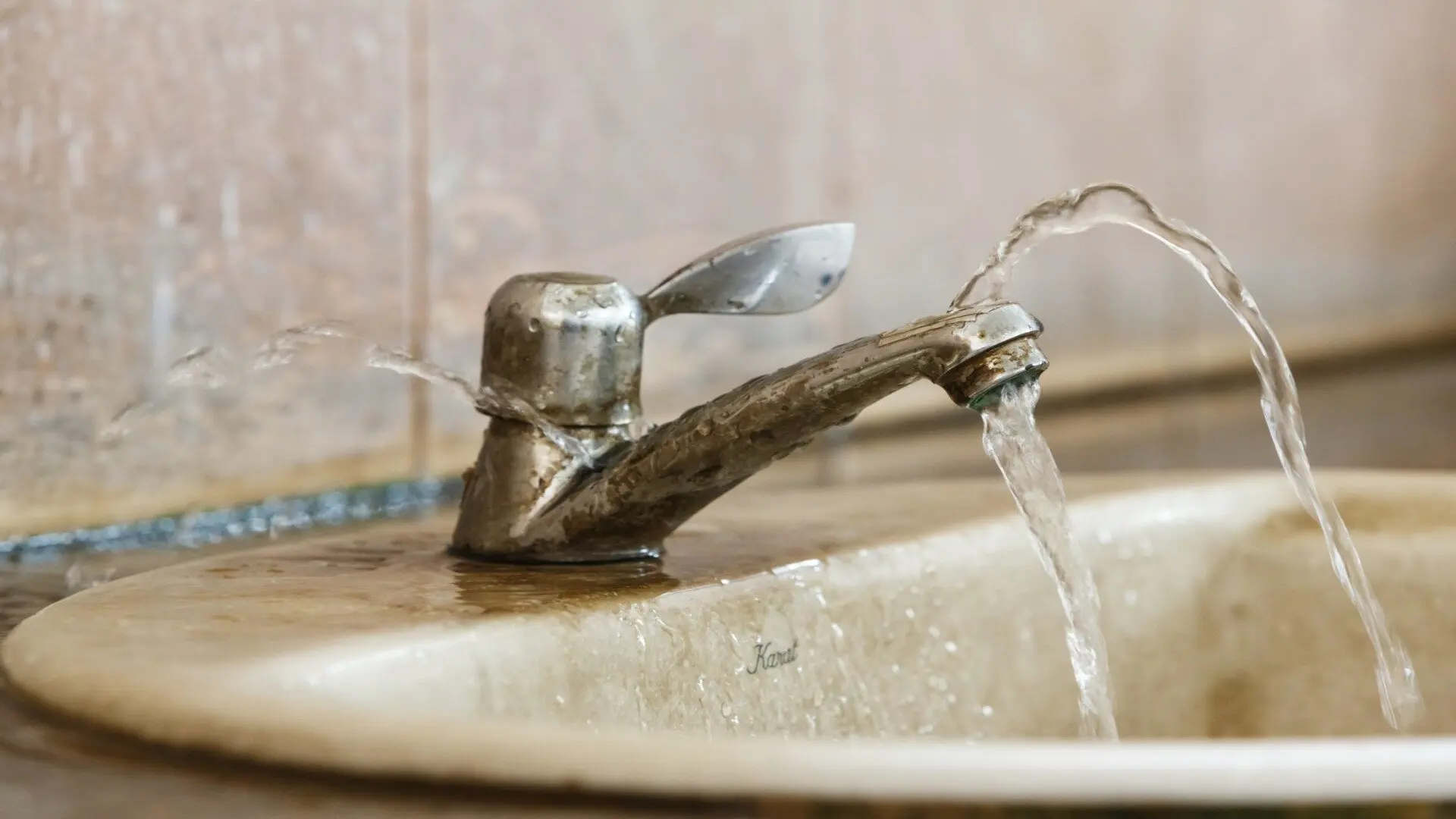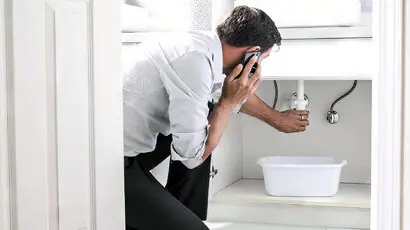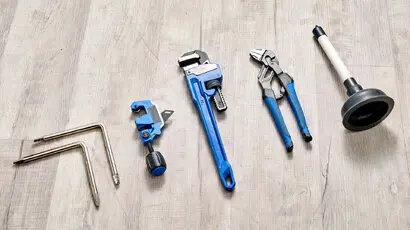Is it time to upgrade the outdated or leaking faucets in your home? Installing new taps can update the look of your space and improve water efficiency. But should you take on the tap installation yourself or hire a professional plumber?
Both options have benefits. Doing it yourself can save money on labour costs. However, a licensed pro prevents potential problems for complicated plumbing jobs.
This guide covers the tap replacement process, factors to consider when deciding between DIY or plumber, and when it’s best to call the experts.
What’s Involved? Replacing Your Tap
Swapping out an old faucet for a new one? Here’s the process: start by turning off the water supply and disconnecting those lines from your current tap. Once that’s sorted, you’ll need to completely remove the old fixture from your sink or countertop. It sounds straightforward, but it requires some careful steps.
With the old tap removed, the area around the sink will need to be thoroughly cleaned—scraping off any old plumber’s putty, sealant residue, grime, and debris from the previous installation until the contact area is clean.
![]()
Next up, apply new plumber’s putty or a gasket seal around the sink opening before prepping the area for your new tap. Attach the base plate, connect those flexible hoses, and get the handle assembly secured. Don’t forget to reconnect the water lines using handy shut-off valves for future ease. Make sure everything is snug and tight!
Once fully assembled, turn the water supply back on and test the new tap, carefully checking for leaks under or around the sink. Finally, apply a bead of clear silicone sealant around the edges to form a watertight seal between the new faucet and sink surface.
While this covers the overall job, the specific steps can vary depending on the tap type and complexity of the installation. Some replacements are relatively simple, while others require more involved plumbing modifications.
Key Skills Needed for DIY Installation
Taking on a tap replacement DIY requires the following:
- Familiarity with common plumbing repairs
- Ability to work in confined sink spaces
- Experience with plumber’s putty application
- Knowledge of supply line connections, adapters
- Patience dealing with stuck old fixtures
- Physical strength removing old tap
- Awareness of codes and permit requirements
Benefits of Hiring a Professional Plumber
While DIY is possible for some, there are advantages to hiring a qualified plumber:
![]()
Experienced with All Tap Installs
Plumbers are experts in installing various faucet types in kitchens, baths, laundries, and other areas. They can also handle complex tap replacements.
Prevent Leaks
The pros ensure the plumber’s putty seal and supply line connections are correctly applied to prevent leaks behind walls or under sinks.
Access Hard-to-Reach Areas
Plumbers have the skills and tools to remove old fixtures and install new taps in cramped spots under sinks or counters.
Provide Guidance in Choosing New Taps
A pro can advise you on the best replacement tap for your setup and usage needs.
Manage Unexpected Issues
Plumbers can troubleshoot problems with pipe fittings or valve connections and have parts on hand.
Protect Your Property
Bringing in a qualified plumber can save your sinks, countertops, and floors from potential damage due to leaks or mistakes during installation. It’s an investment in peace of mind.
Peace of Mind
Licensed professionals guarantee code-compliant work you can trust is done right, with warranty, insurance and liability coverage.
When DIY Tap Installation May Be Feasible
Think about the complexity of your plumbing setup and the kind of tap you’re installing. These are key in deciding whether to go the DIY route or call in a pro. If it’s a straightforward job, like swapping a basic single-handle faucet in your vanity or kitchen, DIY might be on the cards since it involves no special plumbing work.
Other ideal conditions for DIY include if the old tap comes off easily with minimal effort, there are functioning shut-off valves under the sink to access, ample room in the cabinet to work in, and the new tap is compatible with existing supply lines needing no pipe modifications.
Having just the essential tools on hand, like wrenches, putty, and a pipe wrench, is also advantageous. Carefully considering criteria such as this can help homeowners determine whether tackling tap replacement on their own is feasible or if hiring an experienced plumber is the wiser choice.
Common Problems DIYers Encounter
There are several common problems and issues that DIYers encounter when trying to replace taps themselves. If any of the following apply to your situation, hiring a professional plumber for the installation is likely the better and safer option:
- After repeated attempts, the existing old faucet is completely stuck and unable to be detached from the sink.
- The supply lines behind the sink are positioned such that they would need to be rerouted and extended to accommodate the new replacement tap.
- Once disassembly begins, hidden leaks deeper behind the sink or countertop become apparent. You need more space in the cabinet to access and work on the plumbing connections.
- Upon inspection, the existing valve fittings are discovered to be exceptionally complex, corroded or otherwise unable to be worked with by an amateur.
- There are no shut-off valves under the sink to shut the water supply off before beginning the replacement.
- Required plumbing permits and inspections in your area would make DIY installation out of compliance.
Mistakes from scenarios like these can easily lead to costly water damage, flooding, mould issues or unusable sinks if replacement is attempted without professional skills. The risks of DIY tap installation under non-ideal conditions are not worth it compared to the reasonable cost of hiring a qualified plumber to do the job correctly.
When Is DIY Tap Replacement Appropriate?
Tap replacement projects that may work for DIYers with basic plumbing experience include straightforward swaps like installing a new vanity sink faucet to replace an old, worn-out one, as long as it is a simple, like-for-like single-handle model.
![]()
Other achievable DIY tap installs can include replacing the main kitchen sink mixer tap as long as it only involves attaching a basic, affordable single-lever handle replacement. Swapping out leaky old laundry room or utility sink taps with new, inexpensive models is also often feasible.
Some DIYers may even replace the visible trims and handles on bathroom shower taps without altering behind-the-wall plumbing. The key to DIY success is sticking to simple, straightforward tap swap-outs rather than taking on more advanced installations that are best left to qualified professionals.
You need to consider their skill level carefully and only take on replacement projects within their abilities, such as calling in a plumber for any complex or risky tap installation work.
DIY Savings vs Plumber Hourly Rate
Opting to install a new tap yourself rather than hiring a professional plumber will allow you to avoid paying labour costs, which is the main DIY savings advantage. However, you must carefully weigh potential risks, even for simple DIY tap projects. For example, even small leaks that seem minor initially could lead to water damage, mould growth, rotting cabinets or floors, and other expensive property damage if handled poorly.
A mistake during DIY installation can also result in a non-functional or unusable sink that requires a plumber’s expertise to fix or replace it at a higher overall cost. Carefully consider all these risks and factor them into your DIY savings calculation. A plumber’s hourly rate brings professional expertise and years of experience for quality work you can trust is done right. Those costs are often worthwhile for complicated projects compared to extensive damages or problems from improper DIY installation.
Sourcing High-Quality Taps and Parts
When providing your replacement tap for installation, either DIY or by a plumber, be sure to buy directly from reputable manufacturers. Avoid cheap import taps in discount stores or online marketplaces, as these often leak or break entirely shortly after installation due to poor-quality materials and manufacturing.
A professional plumber has insider access to order from quality commercial grade tap brands at fair discounted trade prices, often allowing them to source a compliant, durable faucet at or below what a home DIYer can find independently.
![]()
Understanding Permit and Code Requirements
Major plumbing work like tap installations are typically subject to permits and inspections per local regulations before, during, and after completion. Be sure to carefully research the requirements in your city or regional municipality when planning a tap replacement. Pull all required permits well in advance.
Licensed plumbers are experts at safely and properly navigating all permit and code requirements for compliant tap installation and avoiding fines or violations for improper work. Attempting DIY tap replacement without proper permits can risk fines, order to remove disallowed work, or even lack of home insurance coverage for failures on unpermitted plumbing.
The DIY or Pro Decision
As this guide outlines, relatively simple tap swaps in inaccessible areas can be DIYed to save money. But anything complex, risky, or needing permits is best left to professional plumbers with the expertise to handle the job safely and correctly.
For guaranteed quality installation without hassles, consider the benefits of hiring a licensed pro worth the reasonable rates. Your property will be protected, the new tap optimised, and the plumber will be held responsible for any liability.
Contact the professional tap installation experts at WP Plumbing in Melbourne for a worry-free faucet upgrade or replacement. Take advantage of competitive rates and affordable after-hours services from trusted local plumbers. Get in touch for a quote on your new bathroom, kitchen, laundry or outdoor tap project today!







